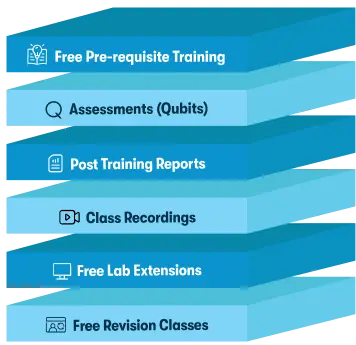We're open through the holidays to support your upskilling goals — book your session today!
We're open through the holidays to support your upskilling goals — book your session today!
Unable to find what you're searching for?
We're here to help you find itCN50: Introduction to Cloud Native Technology Course Overview
In this course, you’ll learn the basics of cloud and cloud-native computing. We’ll cover cloud-native terminology and basic architecture, history and industry trends, general architecture, the cloud-native community and industry leaders, advantages and limitations of cloud computing, and what’s involved with migrating to the cloud. This course is designed to enable you make decisions about next steps when considering implementing cloud-native technologies and practices in your organization.
Purchase This Course
USD
View Fees Breakdown
| Flexi Video | 16,449 |
| Official E-coursebook | |
| Exam Voucher (optional) | |
| Hands-On-Labs2 | 4,159 |
| + GST 18% | 4,259 |
|
Total Fees (without exam & Labs) |
22,359 (INR) |
|
Total Fees (with Labs) |
28,359 (INR) |
Select Time
Select Date
| Day | Time |
|---|---|
|
to
|
to |
Scroll to view more course dates
*Inclusions in Koenig's Learning Stack may vary as per policies of OEMs
Suggestion submitted successfully.
Koenig Learning Stack
Inclusions in Koenig's Learning Stack may vary as per policies of OEMs



